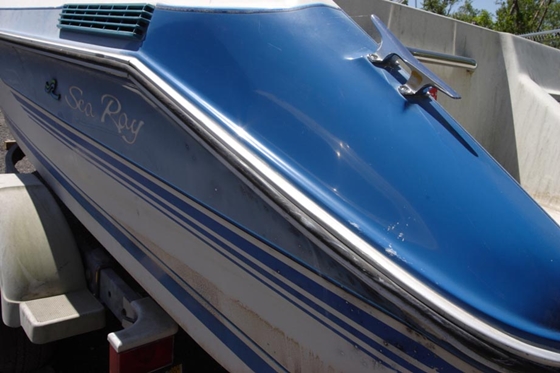When it comes to caring for the finish on your boat, there are essentially five steps to the process and two approaches. The steps are, in order:
- Wash
- Clean
- Polish
- Protect
- Maintain
The two approaches are Best Results or Quick & Easy. Well, none of it is easy. It all takes work. It’s just that the second approach involves less of it.
However, any time you combine steps, you’re losing the individual characteristics of each category. A cleaner-polisher-wax is not going to clean as well. It’s not going to polish as well, and it certainly won’t protect as well. The tradeoff is that it’s a lot quicker.

The method largely depends on the condition of the boat. For example, a new boat likely would need just a wash and wax to keep it looking good. For older models showing their age, you might need to go through all five steps to bring back the finish.
Before you head to West Marine to get the supplies, know the basics. First, if you can move your boat around on a trailer, put it in the shade. Washing and waxing are all easier on a cool surface. Second, for washing, use two buckets if you can. One bucket is for the soap, the other is to rinse the dirt off the sponge before you put it back in the soap bucket. It doesn’t make an immediate difference, but over time the method prevents the small “spider scratches” that show up in direct sunlight. And third, make sure you use biodegradable boat wash soap. It’s safe for the environment and it doesn’t remove wax. Do not use dishwashing soap, which does remove wax. Unless you really enjoy waxing your boat.
Once the boat is clean, look at its condition and decide which method you need to use: best results or quick and easy. Either way you’re looking at some serious elbow grease. Boats have a lot of surface area to be polished and waxed.
Contrary to popular belief, you don’t need to slather on thick coats of polish and wax. A thin coat is all you need, because regardless of how heavily you lay it on, the same amount of product is actually going to stick to the surface. When you put a real thick coat on there, you’re going to be wiping off a bunch of excess, which is a waste of both product and effort.
In terms of what to use, I’m not going to tell you that Meguiar’s is better than Mother’s, or that Simoniz is better than Turtle Wax. Use what you like, but for boats, you’re better off with synthetic waxes than you are with a natural wax like a carnauba. Why? Synthetic polymers offer superior protection. A carnauba is easy to apply and remove, and it gives a great shine, but it tends to degrade rapidly in a saltwater environment.
Most of the experts I’ve interviewed over the years recommend surface care at least twice a year, and if you’re washing with the right soap, that should be all you need. The more often you maintain and take care of your gelcoat properly, the easier it is. Frequent boat care is easy boat care. Well, easier, anyway.



0 Comentarios